Yokozuna - Yokozuna
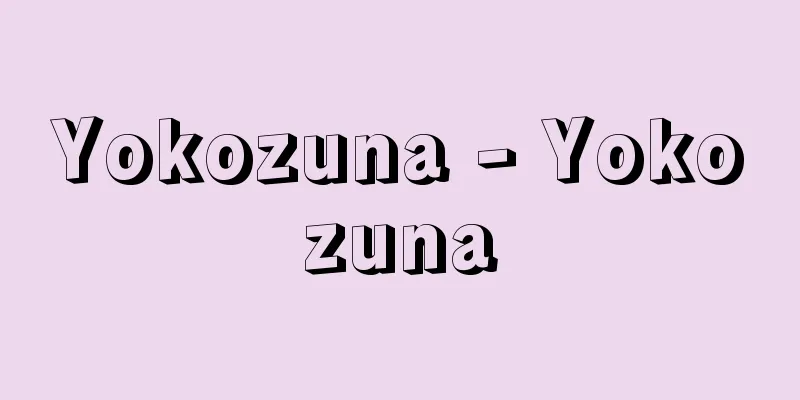
|
The highest rank in professional sumo. An abbreviation of Yokozuna rikishi. Also, "shimenawa" (student yokozuna) is given to the winner of student sumo. The meaning and content of Yokozuna has changed considerably over the years. In 1789 (Kansei 1), the Yoshida Tsukasa family thought of performing the ground-hardening ceremony (shikofumi) that had been performed by wrestlers when building temples and houses, on the sumo ring. They licensed Tanikaze and Onogawa to "Yokozuna no Den" and performed Yokozuna dohyo-iri during tournaments. At that time, "yokozuna" referred to the "shimenawa" worn around the waist when entering the ring, and the Yokozuna license meant the transfer of the qualification to wear the "shimenawa" and enter the ring alone, and Yokozuna was neither a rank nor an honorific for wrestlers. Also, the license was not directly related to winning the championship, but was given to ozeki wrestlers selected for sumo matches viewed by the Tokugawa Shogun for ceremonial reasons. During the turmoil at the end of the Edo period, the significance of this title faded, and in the Meiji period, there were cases where licenses were given to ozeki wrestlers who had made many years of distinguished service, or for matches viewed by the Emperor. Osaka and Kyoto sumo, which became independent after the Meiji Restoration, received yokozuna licenses from the Gojo family, another head of sumo, the Yoshida Tsukasa family, and were the first to add the words "yokozuna enters the ring" to their rankings. In May 1890 (Meiji 23), Nishinoumi, who had a yokozuna license, wrote the word yokozuna instead of ozeki on the banzuke for the first time, which became the premise for dividing yokozuna into a rank. Inspired by this, in 1895, 30 years after his retirement, Ozeki Jinmaku of the late Edo period planned to select wrestlers who had received yokozuna licenses from among the previous ozeki wrestlers as "yokozuna wrestlers" and to erect a monument to commemorate them, distributing a document that listed the yokozuna algebra that he had devised. This included fictional legendary wrestlers Akashi, Ayakawa, and Maruyama, counting Nishinoumi's 16 generations, and the monument was completed in 1900 (Meiji 33). Five years later, Hitachiyama and Umegatani received licenses, and after the yokozuna that had been posted up until then were listed in the main column, it came to be generally seen as a rank, and in 1911, the Sumo Association codified and established yokozuna as a rank. In 1950 (Showa 25), an advisory committee called the "Yokozuna Deliberation Committee" was established, and the format for yokozuna licenses changed to one where the Sumo Association recommends candidates for the rank of yokozuna, and the Yokozuna Deliberation Committee consults on their suitability to decide, and the Association issues a letter of recommendation. The current condition for a yokozuna recommendation is for an ozeki wrestler to win two tournaments in a row, or achieve a similar result. [Masao Ikeda] How to make a Yokozuna rope (rope-making ceremony)The materials used to make the rope are 8 to 12 kilograms of hemp, three copper wires, and 6 to 9 bolts of bleached cotton. The hemp is kneaded with rice bran to make it as thin as silk thread, and the kneaded hemp is divided into three strands, which are then made into three strands with copper wire as the core. This is tightly wrapped with two bolts of bleached cotton, and three ropes about 3 meters long are made. When wrapping the bleached cotton, the part that will be in front of the abdomen is made thicker and the ends are made thinner. The three ropes are then twisted together from the middle to the left. This is called the rope-making ceremony, and takes about three hours. [Masao Ikeda] [Reference] |National Diet Library Umegaya Totaro (2nd generation) Source: Shogakukan Encyclopedia Nipponica About Encyclopedia Nipponica Information | Legend |
|
職業相撲(すもう)における番付上の最高位の階級。横綱力士の略称。また学生相撲の優勝者に与えられる「しめなわ」(学生横綱)。横綱の意味と内容は、時代によってかなり変わってきている。1789年(寛政1)、これまで寺や屋敷を建設するとき、力士によって行われていた地固め式の作法(しこ踏み)を、土俵上で演出することを考えた吉田司(つかさ)家が、谷風・小野川に「横綱之伝」を免許して、場所中に横綱土俵入りを披露(ひろう)したのが始まりである。当時の「横綱」とは、土俵入りのとき腰にまとう「しめなわ」をさしていい、横綱免許とは「しめなわ」を締めて1人土俵入りをする資格を伝授することであって、横綱は力士の階級でも尊称でもなかった。また直接には優勝に関係がなく、徳川将軍上覧相撲に際して選ばれた大関力士に儀式上の必要から免許が与えられた。幕末の混乱期にはその意味も薄れ、明治に入って長年功労のあった大関や天覧相撲に際して免許した例もある。維新後に独立した大阪・京都相撲は、吉田司家と別の相撲の家元五条家から横綱免許を得て、初めて番付に「横綱土俵入仕候」と書き添えた。 1890年(明治23)5月、横綱免許の西ノ海が大関にかわる横綱の文字を初めて番付に記したことが、横綱を階級化する前提となった。これに刺激された幕末の大関陣幕(じんまく)は、引退して30年後の1895年に、これまでの大関力士のうちから横綱免許を受けた力士を「横綱力士」として選び、これを顕彰する記念碑建立(こんりゅう)を計画し、考案した横綱代数記載の文書を配布した。これには、明石(あかし)、綾川(あやがわ)、丸山の非実在の伝承力士まで加え、西ノ海の16代までを数え、記念碑は1900年(明治33)に完成した。さらに5年後には常陸山(ひたちやま)、梅ヶ谷(うめがたに)に免許があって、これまで張り出された横綱が正欄に記載されてからは、一般に階級とみるようになり、1911年には相撲協会が横綱を階級として成文化し確定した。1950年(昭和25)には「横綱審議委員会」という諮問会を設け、横綱の免許は相撲協会が候補力士を推挙し、その適否について横綱審議委員会の諮問を得て決定のうえ、協会が推挙状を授与する形式となった。なお現在の横綱推挙の条件は2場所連続優勝か、これに準ずる好成績をあげた大関力士となっている。 [池田雅雄] 横綱の綱のつくり方(綱打ち式)綱の材料は、麻8~12キログラム、銅線3本、晒木綿(さらしもめん)6~9反。麻を米ぬかでもみほぐして絹糸のように細くし、もんだ麻を3本に分けて銅線を芯(しん)にして三筋つくる。これを晒2反で堅く巻き、3メートルぐらいの長さの綱を3本つくる。晒を巻くとき、腹部の前面にくるところを太くして両端は細くする。そして3本の綱を真中から左練りに撚(よ)り合わせる。これを綱打ち式といい、約3時間かかる。 [池田雅雄] [参照項目] |国立国会図書館所蔵"> 梅ヶ谷藤太郎(2代目) 出典 小学館 日本大百科全書(ニッポニカ)日本大百科全書(ニッポニカ)について 情報 | 凡例 |
Recommend
Community college
American public two-year colleges. Open to all you...
Saigū ruins - Saiguato
This is a nationally designated historic site loca...
Kurobe Gorge
A gorge upstream from Unazuki Onsen on the Kurobe...
Novial
…He was a scholar who bridged the gap between tra...
Nagai Basin
A basin in the upper reaches of the Mogami River i...
Troche
Troche is a round or oval flat tablet that dissolv...
Végh S.
...For Kodaly, a nationalist who resisted the pol...
Tsunoshima Island
A basalt plateau island located in the northweste...
Park Se-young - Bokusei-ei
A North Korean poet. Born in Gyeonggi Province. I...
Tiksi (English spelling)
A city in the Sakha Republic in eastern Russia. A ...
Pyridoxamine
...It has also been reported to have the effect o...
Training - Training
〘noun〙① (━suru) To teach; To teach and make skille...
Neyruz
…Axes with a rim height of 1-2 mm are called low-...
coccolith ooze
...However, in many cases, the majority of partic...
Honinbo Jowa
Year of death: October 10, 1847 (November 17, 1847...
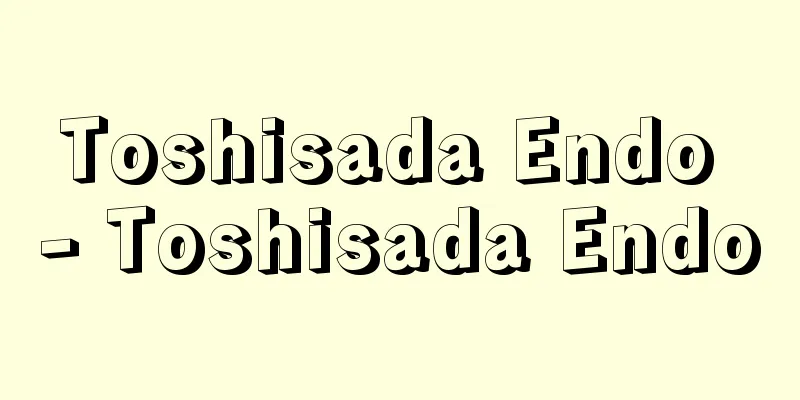
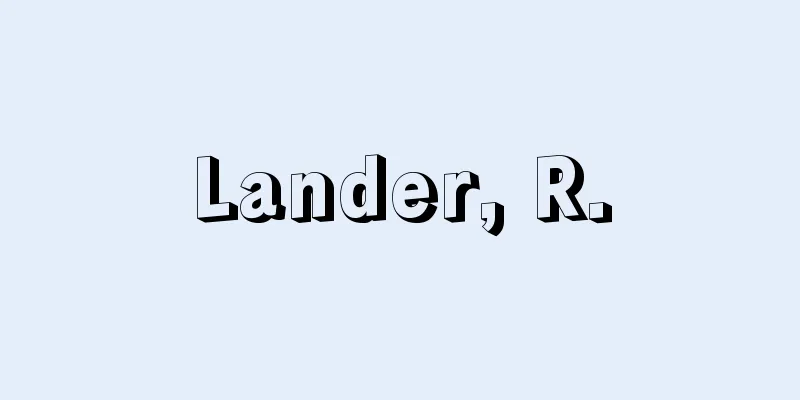
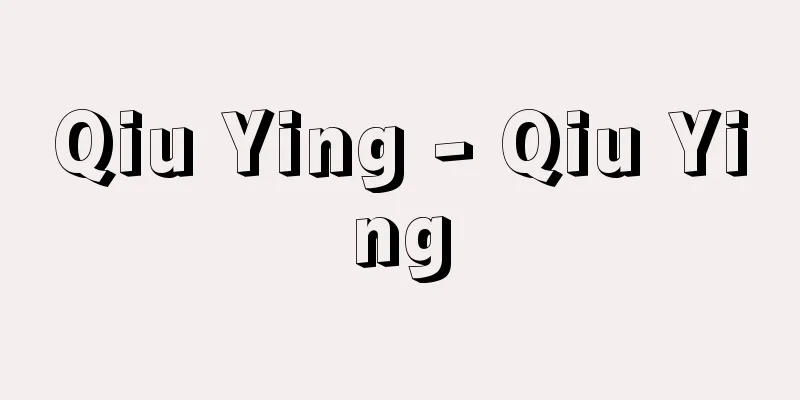




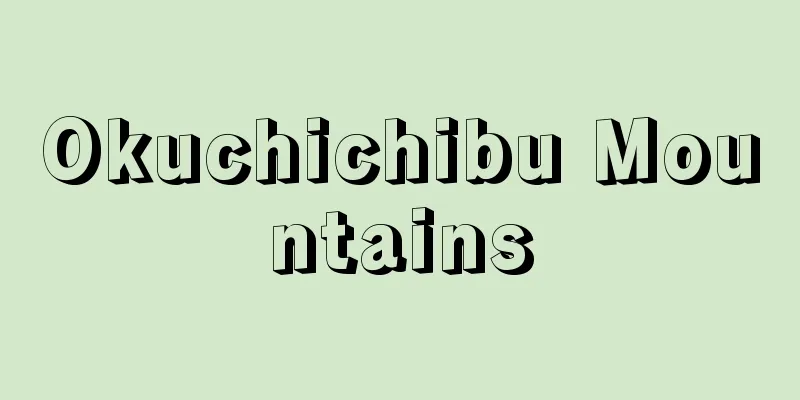

![Shirakawa [city] - Shirakawa](/upload/images/67cbe51f2e553.webp)